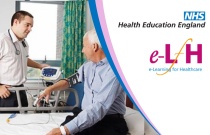Enhancing Nutrition for Infants, Children, Adolescents and Women
The Hospital for Sick Children (SickKids) & ADRA Canada
Good nutrition and nutrition-related behaviours are critical for a child’s healthy growth, development and survival. Malnutrition (both undernutrition and overnutrition) can be prevented and managed, and you can contribute to better outcomes for your patients through supporting improved nutrition knowledge and practice in health....
lp exam test
Mr WCEA Administrator
Course Description* Please add a course description with a minimum of 20 characters.
Addressing Environmental Injustice and Health Disparities: A global imperative
Prof. Stephen Abah
Join us for an engaging and informative webinar focused on the critical intersection of environmental equity, public health, and global collaboration. This event is designed for policymakers, environmental advocates, public health professionals, and anyone passionate about creating a fair and healthy world. Together, we will ex....
Frailty in primary health care: a call to action for general practitioners
Dr. Daniel Munyambu
As life-expectancy increases in all countries, older age brings along increasing health challenges. Frailty is a state of increased vulnerability to internal stressors. However, older adults are rarely diagnosed nor managed for frailty in LMICs. The lecture will offer an introduction to the subject of frailty, describe its patho....
Mpox Disease
Dr. Daniel Kaonga
In July, 2022 WHO declared mpox outbreak a public health emergency. Recently, there have been rise in mpox cases in Malawi and globally. This webinar aims at uncovering aspects related to spread of this disease as well as on how to contain it.
Mastering Orthopaedic Implants
Mr Mohammed As-Sultany, Mr Rajesh Gopireddy, Mr Vilas Sadekar, David Huges Medhat Zekry, Mr Akhil Kapoor, Justin Mooteeram, Joe Gouda
Gain a comprehensive understanding of orthopaedic implants. Stay up-to-date on the latest developments in orthopaedic implant technology. Prepare for a career in orthopaedics and Musculoskeletal Care. Enhance your knowledge and skills in orthopaedics. Earn an approved CPD certificate of completion for the course.
Hepatitis B (Transmission, Treatment, Lifestyle Modifications and Prevention)
Tumaini Bayasabe
This presentation is about Hepatitis B. The aim is to explain its Transmission, Treatment, Lifestyle Modifications and Prevention.
Reversing Type 2 Diabetes with Diet
Dr Roxanne Becker
Diabetes is the second leading cause of death in South Africa and among the top leading causes of death globally. From surgical wards to obstetric wards, you are guaranteed to encounter it. Traditionally, the role of type 2 diabetes management is to control glucose and prevent complications from developing, but recent evidence....
Example course scormception
Mr WCEA Administrator
Course Description* Please add a course description with a minimum of 20 character
CNA test
Mr WCEA Administrator
• 30 years experience specializing in trauma informed care training/services, addiction recovery, supervisory case management, crises management, and advocacy for victims and their families. • Director, CARE-EDU (Center for Advanced Recovery Education) • Certified Alcohol and Drug Counselor, CADC-II, # A010250315 • National C....
A Hybrid Approach to the Use of Agile in Health IT
Spencer Stout, MBA, CSM
1.25 Hours
Agile in IT has been around for over a decade and it is hard to find an organization that hasn’t attempted to implement it in some fashion or another. While most standard agile frameworks seem to omit the project manager role and the structure provided by traditional waterfall project management processes, University of Utah Hea....
Radiology Review – Upper Extremity X-ray 2
Thomas V. Gocke, MS, ATC, PA-C, DFAAPA
0.75 Hours
This video-based activity focuses on radiographic exam of the Humeral shaft, elbow, and forearm
Intrathecal Drug Delivery
Alison C Mitchell
0.50 Hours
This session provides an overview of intrathecal drug delivery (ITDD) for the management of cancer pain. It aims to enhance the understanding of which patients may benefit from this approach and the principles which govern the safe use of ITDD systems.
Confidentiality and Privacy
Wing May Kong & Jennifer Richardson
0.25 Hours
The session will look at what you need to do in clinical practice when handling, storing or sharing personal information to ensure that you fulfil your ethical, legal and professional obligations with regard to maintaining patient confidentiality.
tutum only video
Mr WCEA Administrator
tutum only video tutum only video tutum only video tutum only video tutum only video
Storyline latest file / Dhaneshwar EDIT 2 .MOV
Mr WCEA Administrator
Storyline latest file / Dhaneshwar EDIT .MOV
Prudent Use of Antibiotics (Part 3)
Nicholas Cooley, Greg Scutt & Paul Wade
0.50 Hours
The aim of this session is to promote rational use of antibiotics in optimising treatment of patients with infections and reducing emergence of antibiotic resistance. The risks of developing Clostridium difficile will be explained.
PCM M2 Delivering Virtual Consultations
Primary Care International (PCI)
Here will explore how to deliver effective virtual consultations.
PCM M7: Low Back Pain
Mr WCEA Administrator
This unit will look at the management of low back pain in primary care using a case-based approach.
Malaria in Ethiopia: Progress in control and remaining challenges
Professor Daniel Yilma, MD, PhD; Dr Samuel Girma, MD, MPH, Internist
"Challenges in the management of Malaria" More than 600,000 people still die of malaria every year. The emergence of diagnostic and treatment challenges due to the parasite escaping the detection with commonly used diagnostic tests and becoming resistant to antimalarial drugs has been a great concern. "Malaria Control and Eli....






















